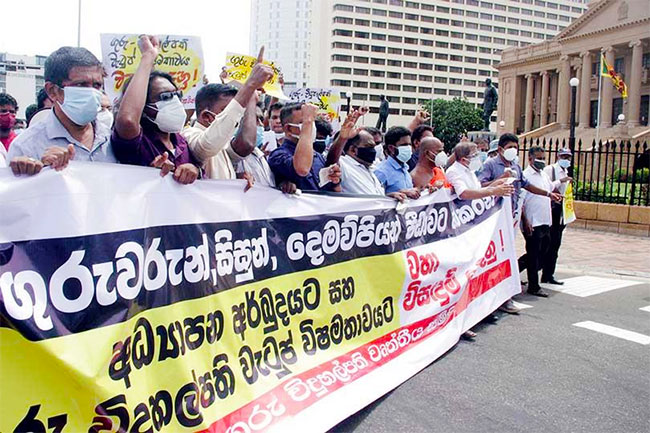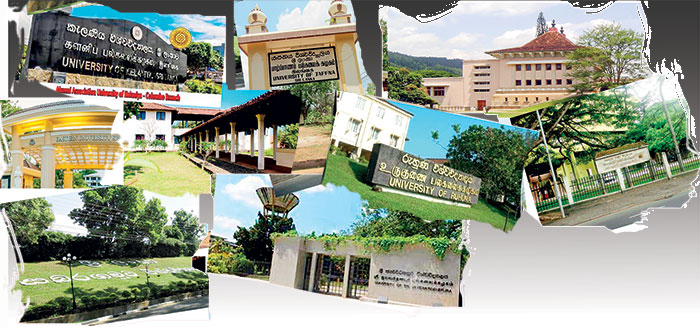Udari Abeyasinghe
Considering the range of experiences academics encounter in university environments, from collegiality to subtle hostility, it is worth asking whether higher education institutions genuinely allow their junior members to work with dignity. Do our academic environments foster fairness, respect and recognition they truly deserve, or do they continue to erode these very principles? We speak often about ragging and sexual and gender-based violence (SGBV) as issues that harm students, yet we rarely acknowledge their lasting impact on academic staff. The same tolerance of intimidation, silence and retaliation that sustain ragging and SGBV also shapes how academics experience their workplaces. I have realised, over the years, that these reflections are not mine alone. They echo the silent struggles of many academics across our universities.
From my point of view, dignity at work is not a luxury. It is the right to be treated with fairness, respect and to be recognised for one’s contribution. It means being able to perform one’s duties without humiliation, exploitation, or fear. In academia, dignity also means the freedom to think, teach and speak, without intimidation or silencing. As the UNESCO recommendation concerning the Status of Higher Education Teaching Personnel (1997) reminds us, teachers must enjoy “freedom of teaching and discussion” and a “fair and equitable workload” that permits them “to carry out their duties in teaching, scholarship and research.” When those conditions disappear, dignity erodes. The same can be said of how our universities respond to deeper forms of violence, within our own walls. When intimidation, fear and silence are tolerated in one sphere of the university, they inevitably seep into others, shaping how both students and academics experience their right to safety and respect at work.
The Weight of Work
Within academia, exhaustion seems to have become a badge of honour. Many early and mid-career academics, particularly those leading departments with limited staffing, carry an unsustainable combination of teaching, research, and administrative work, leaving little space for rest and reflection.
The beauty of university life lies in scholarship and mentorship, yet these are the very things we risk losing under the weight of administrative and teaching overload. When cadre shortages persist for years and academics are forced to shoulder triple workloads, the human cost is extensive. Time for rest, reflection and research disappears. Burnout becomes normalised and the narrative of “sacrifice for the institution” often disguises systemic neglect. Research confirms this pattern. A 2023 study on burnout among higher education faculty found that excessive teaching and administrative loads, coupled with limited autonomy, arekey drivers of emotional exhaustion and disengagement (Koster et al., 2023). The study concluded that when academics lack control over their workload and receive little institutional support both their well-being and the quality of their teaching decline.
When exhaustion replaces intellectual joy, our work becomes mechanical. And when overwork is glorified as dedication, dignity quietly slips away. To work with dignity, one must have the space to think, to create and, of course, to breathe, regardless of one’s rank or position.
In the Shadow of Hierarchy and Tradition
Academic bullying often hides behind civility at our universities. It appears in the raised eyebrow during a meeting, the public correction meant to humiliate, or the quiet exclusion from decisions. Young academics who demonstrate expertise or confidence can trigger insecurity among some who believe that titles, grades and age alone should confer authority. Instead of mentorship, they offer superiority/ condescension.
A 2024 scoping review of 140 cross-national studies on workplace bullying and harassment in higher education confirms that this behaviour is systemic and not incidental (Hodgins et al., 2024). The review identifies hierarchy, power, dependence and institutional silence as key enablers of bullying. Similarly, Tay (2023) notes that bullying in academia cannot be separated from “the structural power distances within the institution.” For junior academics, this hierarchy dictates every interaction. They must constantly prove their worth, seek approvals, and avoid offending those who hold power over their promotions and confirmations. Fear of being labelled “disrespectful” or “problematic” ensures compliance, while institutions respond to criticism with defensiveness rather than introspection. Such silence is not neutral. It is corrosive. It teaches conformity over courage and survival over scholarship. Every time the system chooses silence over justice, it erodes the collective dignity of the academic community.
Those who take principled stances against abusive “traditions” sometimes face professional exclusion or silent hostility. An academic friend of mine, a drama director, shared her story with me. As an undergraduate, she was outspokenly against ragging. Years later, despite her artistic achievements, her dramas are never invited to major university festivals because student unions remember her as an “anti-ragger.” When institutional cultures reward conformity and punish courage, the idea of working with dignity becomes a distant dream.
Brushed Under the Rug
I have written about this before, but it bears repeating. SGBV still thrives in our universities. Even though policies and committees exist, victims rarely feel safe to speak. The fear of retaliation, loss of reputation and career stagnation keep many silent.
Quite often, individuals who speak out against SGBV continue to experience subtle forms of retaliation. Those who make complaints or attempt to hold perpetrators accountable are often labelled as troublemakers. When concerns about institutional tolerance of misconduct are voiced, they are frequently met with defensiveness, with some insisting that public discussion of such issues would tarnish the good name of the institution. As Hodgins et al. (2024) describe, this pattern constitutes a form of institutional violence where silence and inaction perpetuate harm. Dignity at work requires both physical and emotional safety. Without it, no academic can thrive.
Towards a Culture of Dignity
To restore dignity in academia, we must begin by naming indignities. Overwork is not dedication, harassment is not tradition and hierarchy is not wisdom. Universities must create structures that protect those who speak up. In, recent years, Sri Lanka has tried to make progress with addressing ragging and SGBV through University policies, UGC circulars, and even a Supreme Court directive that offers detailed guidelines for prevention of ragging. These are important steps forward. Yet dignity at work extends beyond preventing overt violence. It also requires tackling the everyday forms of academic bullying; the exclusion, belittling and power misuse that corrode morale and integrity.
It is time for universities to go further and adopt clear anti-bullying policies, similar to those recommended in other higher education systems (Hodgins et al.,2024). Such policies should define unacceptable conduct, ensure confidential reporting mechanisms and establish impartial inquiry procedures. They should protect complainants and witnesses from retaliation and hold perpetrators accountable, regardless of rank or title.
While cultural and procedural reforms are vital, they cannot fully succeed without addressing the material realities of academic work. The reality of inadequate staffing, the freeze on recruitment and declining state investment in higher education drive academic exhaustion. UNESCO’s 1997 recommendation emphasises that teaching personnel are entitled to fair and equitable workload. However, this cannot be achieved in institutions struggling with structural shortages. Dignity at work cannot exist without the capacity to do our work well. Therefore, the government must support universities to pair cultural change with structural reforms; that is by reviving recruitment as was before, ensuring equitable distribution of staff and restoring public funding to sustainable levels. Otherwise, the call for dignity risks becoming symbolic rather than transformative.
Genuine well-being among academics depends on autonomy and institutional support, not endless endurance. Dignity cannot thrive where fear rules. It flourishes only where respect is mutual and justice is visible.


